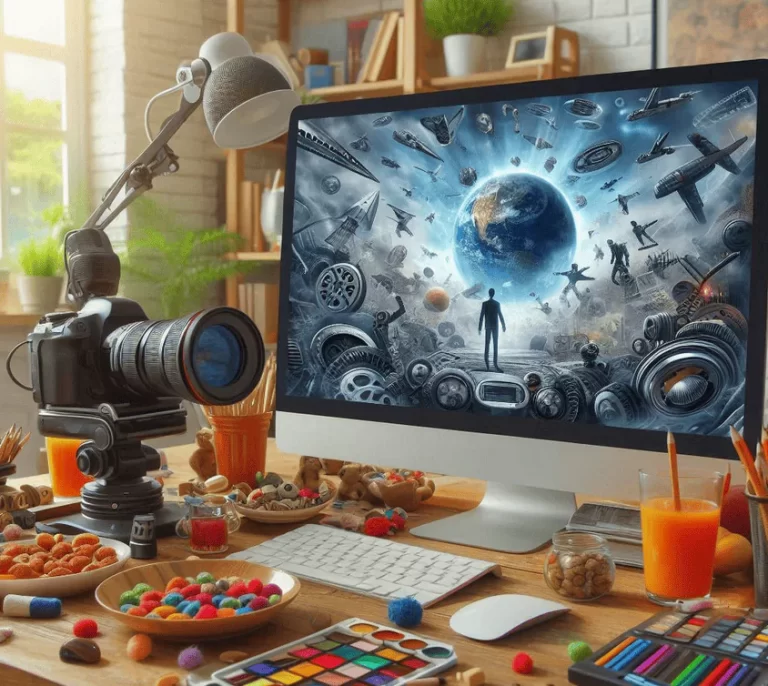
Photo editing In a world saturated with visuals, photography has become a universal language. Whether capturing a serene landscape or a fleeting moment of emotion, the goal is often the same: to create images that evoke feelings and tell stories. But photography doesn’t end at the click of a shutter. It begins there. Photo editing is where the raw potential of an image is refined, polished, and elevated to its full glory.
The Art and Science of Photo Editing
Photography captures reality, but photo editing interprets it. It is the alchemy of turning an ordinary photo into a masterpiece, balancing technical adjustments with creative expression. From subtle corrections that bring out hidden details to bold transformations that redefine the image’s essence, the power of photo editing lies in its versatility.
While many perceive editing as purely technical, it is deeply rooted in artistry. A well-edited photograph resonates because it has been thoughtfully enhanced to align with the photographer’s vision. In this blend of precision and imagination lies the true magic of photo editing.
Why Photo Editing is Essential
With cameras becoming more sophisticated, one might wonder: why is photo editing still crucial? The answer lies in the limitations of even the best cameras.
Modern cameras are technological marvels, but they cannot perfectly capture the nuances of light, color, and texture as perceived by the human eye. A photograph may have flat lighting, unintended distractions, or muted colors. This is where photo editing steps in to correct and enhance the image.
Additionally, editing allows for personal interpretation. Two photographers might capture the same scene, but their editing choices will make their work uniquely theirs. Whether aiming for a moody monochrome aesthetic or vibrant, saturated tones, editing enables individuality.
Building Your Toolkit for Professional Photo Editing
1. Software
The cornerstone of any editing workflow is reliable software. A variety of tools cater to different needs and expertise levels:
- Adobe Lightroom: Perfect for photographers who prioritize organization alongside editing. It excels in batch processing, color grading, and exposure adjustments.
- Adobe Photoshop: The gold standard for advanced photo editing. With its robust layer system and specialized tools, Photoshop offers unparalleled control over every pixel.
- Luminar Neo: Renowned for its AI-powered features, this software simplifies complex processes like sky replacement and advanced retouching.
- DxO PhotoLab: Known for its noise reduction and lens correction capabilities, it’s a go-to choice for technical perfectionists.
2. Hardware
Equally important as software is the hardware you use:
- High-Resolution Monitor: Accurate color representation is crucial in photo editing. Monitors with wide color gamut support, such as the Eizo ColorEdge series, provide precision.
- Graphics Tablet: Tools like the Wacom Intuos Pro offer tactile control, enabling detailed edits that a mouse cannot achieve.
- Fast Processor and Ample RAM: For seamless editing, invest in a computer that can handle the demands of high-resolution files and complex software.
Mastering the Essentials of Photo Editing
1. Cropping and Straightening
The foundation of a well-composed image often lies in its framing. Cropping allows you to eliminate distractions, refine the composition, and adhere to artistic guidelines like the rule of thirds. Straightening ensures horizons are level, a simple adjustment that can significantly impact an image’s professionalism.
2. White Balance
The color temperature of a photo defines its mood. A photo taken under artificial lighting might have an unflattering yellow cast, while a cloudy day could give a bluish tint. Adjusting white balance ensures the colors align with reality—or artistic intent.
3. Exposure and Contrast
Balancing light and shadow is critical. Underexposed photos can hide details in shadows, while overexposed ones lose details in highlights. Adjusting contrast adds depth, making the image pop without overwhelming the viewer.
4. Color Corrections
Vibrancy, saturation, and hue are tools that bring life to your photographs. While vibrancy adjusts muted tones, saturation amplifies all colors. Use these sparingly to avoid unnatural results.
5. Sharpening and Noise Reduction
Details can make or break an image. Sharpening emphasizes textures, while noise reduction smooths out graininess caused by high ISO settings. Achieving a balance between the two is essential for polished results.
Advanced Photo Editing Techniques to Explore
Once the basics are second nature, dive into advanced techniques to take your photography to the next level.
1. Dodge and Burn
Inspired by darkroom practices, dodging (lightening) and burning (darkening) specific areas enhances depth and dimension. This technique is particularly useful in portraits, where it can accentuate facial contours.
2. Frequency Separation
A favorite among portrait photographers, frequency separation isolates texture from color, allowing precise edits. This ensures skin smoothing doesn’t compromise details like pores or hair.
3. HDR (High Dynamic Range) Editing
HDR combines multiple exposures of the same scene, capturing details in both shadows and highlights. It’s especially effective in landscapes, where lighting variations are prominent.
4. Color Grading
Beyond correcting colors, color grading manipulates tones to evoke specific emotions. From warm, vintage-inspired hues to cool, futuristic tones, grading adds a narrative element to your images.
5. Composite Editing
For those who want to push creative boundaries, composite editing involves merging elements from multiple photos. This technique is popular in surreal photography and digital art.
The Role of AI in Modern Photo Editing
Artificial intelligence has transformed photo editing, making it accessible without compromising quality. AI tools like Luminar Neo’s sky replacement or Photoshop’s neural filters automate complex processes, saving time while producing professional results.
For instance, AI can intelligently identify and enhance specific areas of a photo, such as smoothing skin while preserving texture. It also excels at automating repetitive tasks, such as organizing photos or applying presets across batches. While these tools are undeniably powerful, they should complement, not replace, manual adjustments.
Avoiding Common Pitfalls in Photo Editing
Even with powerful tools and techniques, mistakes can undermine the quality of your work. Awareness of these pitfalls helps maintain a high standard:
- Over-Editing: Heavy filters, excessive sharpening, or overly saturated colors can make an image look artificial. Aim for subtlety and restraint.
- Ignoring the Original Intent: Editing should enhance the photo, not overshadow its essence. Keep the original vision in mind while making adjustments.
- Neglecting Calibration: Uncalibrated monitors can distort colors, leading to inconsistencies across devices.
Developing Your Signature Editing Style
The most captivating photographers often have a recognizable editing style. This doesn’t mean being bound by a single aesthetic but rather developing a cohesive approach that reflects your vision. Experiment with different techniques and let your intuition guide you. Over time, your style will become an extension of your creative voice.
Staying Inspired in the World of Photo Editing
The journey of mastering photo editing is ongoing. Inspiration can be found in various sources, from nature’s color palettes to the works of iconic photographers. Engage with online communities, participate in editing challenges, and explore new tools to keep your skills sharp and your creativity flourishing.
Conclusion: Unleashing the Power of Photo Editing
Photography may capture a moment, but photo editing transforms it into art. With the right tools, techniques, and mindset, you can elevate your work, crafting images that leave lasting impressions. Whether you’re an aspiring photographer or a seasoned professional, embrace the power of photo editing to unlock endless creative possibilities.



